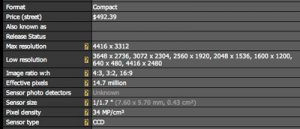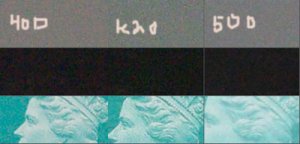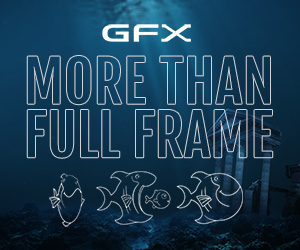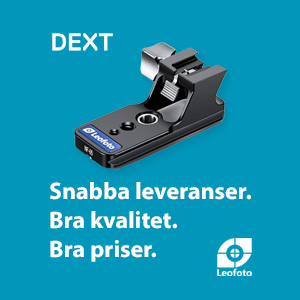Install the app
How to install the app on iOS
Follow along with the video below to see how to install our site as a web app on your home screen.
Notera: This feature may not be available in some browsers.
Du använder en lite för gammal webbläsare.
Många (flera) pixlar inte alltid bara onödigt
- Trådstartare snabb kamera
- Start datum
elbe
Avslutat medlemskap
dpreview säger CCD i sin beskrivning och då är det en Sony eftersom Sony har försett Canon med CCD till föregångarna G9 osv
Du har rätt! Jag blandar troligtvis ihop de men nå rykte jag sett före den blev officiell...
elbe
Avslutat medlemskap
Eller också blandar du ihop den med Powershot SX1 IS som är, såvitt jag vet, Canons första, och hittills enda, kompakt med CMOS-sensor.
Mycke möjligt!.. I den ständigt "brusande" informationen
KGS
Aktiv medlem
...Undrar om KG är medveten om att han pläderar för att avlöva varenda extern mekanisk kontroll både han och jag lärt oss att älska på våra 7D?
Äsch då, man kan ju alltid förbjuda såna bilder i den lokala fototävlingen och hävda att all utveckling efter t ex D7D är av ondo *s*
Sten-Åke Sändh
Aktiv medlem
Äsch då, man kan ju alltid förbjuda såna bilder i den lokala fototävlingen och hävda att all utveckling efter t ex D7D är av ondo *s*
Nu börjar man ju känna igen dig igen.
Sten-Åke Sändh
Aktiv medlem
http://www.alphamountworld.com/photography-news/sonys-back-illuminated-cmos-sensor
http://www.freshpatents.com/Back-lit-image-sensor-dt20080103ptan20080001179.php
kan inte mycket om det, vad jag förstår så kortas/skalas vägen till den ljusmottagande ytan, den ligger inte längre "långt" ner i en "brunn".
Trodde detta bara gällde CCD som skrivits tidigare i tråden men här ser det ju ut att gälla även CMOS om jag läste rätt.
Bilden är ju annars väldigt talande. Om det ligger en massa "kabling" som tar ljus mellan och delvis framför pixlarna så förstår man ju fördelen. Det är så tydligt att man i artikeln utbrister följande:
"In this image it makes you wonder why sensors were constructed with front side illumination in the first place. Makes a lot of sense to do it this way, and it is probably more difficult to do so."
interpix
Aktiv medlem
Talade med Emil om detta, 5d har högre läsbrus än modernare kameror exv 40d men samtidigt också förmåga att samla in fler fotoner under en given tid
Låter lite som lågt brus i bra ljus...
macrobild
Avslutat medlemskap
Latest News
Reviews / Previews
Lens Reviews
Camera Database
Timeline
Buying Guide
Sample Galleries
Discussion Forums
Learn / Glossary
Feedback
Newsletter
RSS Feeds
About
Conclusion - Pros
Detailed and clean image output (but not as detailed as we would have expected from a 15 megapixels sensor)
Chroma and luminance noise well controlled at higher sensitivities
Wide range of image parameter adjustment (-4 to +4 for most)
Effective Highlight tone priority option delivers smooth highlight roll-off
Four levels of high ISO noise reduction (including Off)
Effective vignetting control feature
No noticeable hot pixels with long exposures and NR off
Nine point auto focus system accurate, even in low light
Large, clear and bright high-res screen
Well-built magnesium body, weather-sealed
Good viewfinder, optional focusing screens
Excellent ergonomics and refined user-interface
Quick control menu allows direct access to many important settings
Attractive refreshed menu design
Fully customizable MyMenu
Programmable FUNC button
Two user memories via 'C1/C2' on mode dial
10x magnification in live view allows reliable manual focusing
Instant power on, camera feels snappy and responsive at all times
Fast continuous shooting (6.3 fps)
Excellent data throughput and processing speeds (with fast CF cards)
Very fast PTP transfer speed
AF-Micro-Adjustment
Comprehensive Software package
Very quiet mirror mechanism (plus 2 silent shooting options in live view)
Any combination between RAW and JPEG image sizes possible
Dust reduction from Canon's 'Integrated Cleaning'
Good battery life
Optional WFT-E3 wireless transmitter (802.11 b/g) / vertical grip
HDMI output
Conclusion - Cons
High ISO performance worse than 40D
Very limited usable RAW headroom (channel clipping)
Reduced dynamic range in the shadow areas compared to EOS 40D
Per-pixel detail not as good as on good 10 or 12 megapixel cameras
High-end lenses required to get the most out of the camera
Poor white balance performance under artificial light
Flash must be up for AF assist lamp (although AF is good even in low light)
Live view not as accurate as on 40D (framing very slightly off-center, not possible to magnify right out to the extreme corners)
Overall conclusion
It's exactly eight years ago this month that Phil posted his review of the Canon D30. The camera was Canon's first 'developed in house' DSLR and therefore a milestone in digital photography. But it was also the first model in the popular line of cameras of which the EOS 50D is the latest descendant. Technology has moved on at the speed of light since the year 2000 but each generation of x0D cameras left its mark in the marketplace and the photographic community alike and there is no reason to believe to 50D would be any different. Or is there?
Like its predecessors the 50D sports a well built magnesium body that now features improved environmental sealing. Canon has also had more than eight years to optimize the camera's handling and it's done a good job. The ergonomics feel well sorted, all the controls are in the right place and even the formerly rather pointless Direct Print button now serves a purpose: Press it and you'll enter live view mode. Another useful addition is the Quick Control screen. Press the SET button to enter this newly designed menu which gives you access to the most frequently used settings. Even users who are new to the EOS system will find their way around the 50D in no time. The Quick Control screen and the revamped menus also look great on the new bright and clean 3.0 inch VGA screen.
The camera's performance doesn't leave anything to complain about either. Power on is as good as instant, the camera is always ready when you need it and it is quite impressive at what speed the huge 15 megapixel files are being written, processed and transferred through the imaging pipeline. Canon's new DIGIC IV processor certainly pulls its weight.
Let's have a look at the really important stuff then: Image quality. Below ISO 1600 image output is clean with well balanced contrast and colors and as you would expect from a DSLR with a 15 megapixel sensor the 50D delivers a fair amount of detail. Having said that, in terms of per-pixel sharpness the 50D cannot quite keep up with the better 10 or 12 megapixel APS-C DSLRs in the market. At higher sensitivities the smaller photosites are clearly producing more noise (as shown from our RAW comparisons) and so Canon is having to apply more noise reduction to keep to acceptable noise levels, this of course means a loss of detail from ISO 1600 upwards.
It appears that Canon has reached the limit of what is sensible, in terms of megapixels on an APS-C sensor. At a pixel density of 4.5 MP/cm² (40D: 3.1 MP/cm², 1Ds MkIII: 2.4 MP/cm²) the lens becomes the limiting factor. Even the sharpest primes at optimal apertures cannot (at least away from the center of the frame) satisfy the 15.1 megapixel sensors hunger for resolution. Considering the disadvantages that come with higher pixel densities such as diffraction issues, increased sensitivity towards camera shake, reduced dynamic range, reduced high ISO performance and the need to store, move and process larger amounts of data, one could be forgiven for coming to the conclusion that at this point the megapixel race should probably stop. One consequence of this is that the 50% increase in pixel count over the 40D results in only a marginal amount of extra detail.
We're by no means saying the 50Ds image quality is bad but it's simply not significantly better than the ten megapixel 40D. In some areas such as dynamic range and high ISO performance it's actually worse and that simply makes you wonder if the EOS 50D could have been an (even) better camera if its sensor had a slightly more moderate resolution.
Hoppsan
Reviews / Previews
Lens Reviews
Camera Database
Timeline
Buying Guide
Sample Galleries
Discussion Forums
Learn / Glossary
Feedback
Newsletter
RSS Feeds
About
Conclusion - Pros
Detailed and clean image output (but not as detailed as we would have expected from a 15 megapixels sensor)
Chroma and luminance noise well controlled at higher sensitivities
Wide range of image parameter adjustment (-4 to +4 for most)
Effective Highlight tone priority option delivers smooth highlight roll-off
Four levels of high ISO noise reduction (including Off)
Effective vignetting control feature
No noticeable hot pixels with long exposures and NR off
Nine point auto focus system accurate, even in low light
Large, clear and bright high-res screen
Well-built magnesium body, weather-sealed
Good viewfinder, optional focusing screens
Excellent ergonomics and refined user-interface
Quick control menu allows direct access to many important settings
Attractive refreshed menu design
Fully customizable MyMenu
Programmable FUNC button
Two user memories via 'C1/C2' on mode dial
10x magnification in live view allows reliable manual focusing
Instant power on, camera feels snappy and responsive at all times
Fast continuous shooting (6.3 fps)
Excellent data throughput and processing speeds (with fast CF cards)
Very fast PTP transfer speed
AF-Micro-Adjustment
Comprehensive Software package
Very quiet mirror mechanism (plus 2 silent shooting options in live view)
Any combination between RAW and JPEG image sizes possible
Dust reduction from Canon's 'Integrated Cleaning'
Good battery life
Optional WFT-E3 wireless transmitter (802.11 b/g) / vertical grip
HDMI output
Conclusion - Cons
High ISO performance worse than 40D
Very limited usable RAW headroom (channel clipping)
Reduced dynamic range in the shadow areas compared to EOS 40D
Per-pixel detail not as good as on good 10 or 12 megapixel cameras
High-end lenses required to get the most out of the camera
Poor white balance performance under artificial light
Flash must be up for AF assist lamp (although AF is good even in low light)
Live view not as accurate as on 40D (framing very slightly off-center, not possible to magnify right out to the extreme corners)
Overall conclusion
It's exactly eight years ago this month that Phil posted his review of the Canon D30. The camera was Canon's first 'developed in house' DSLR and therefore a milestone in digital photography. But it was also the first model in the popular line of cameras of which the EOS 50D is the latest descendant. Technology has moved on at the speed of light since the year 2000 but each generation of x0D cameras left its mark in the marketplace and the photographic community alike and there is no reason to believe to 50D would be any different. Or is there?
Like its predecessors the 50D sports a well built magnesium body that now features improved environmental sealing. Canon has also had more than eight years to optimize the camera's handling and it's done a good job. The ergonomics feel well sorted, all the controls are in the right place and even the formerly rather pointless Direct Print button now serves a purpose: Press it and you'll enter live view mode. Another useful addition is the Quick Control screen. Press the SET button to enter this newly designed menu which gives you access to the most frequently used settings. Even users who are new to the EOS system will find their way around the 50D in no time. The Quick Control screen and the revamped menus also look great on the new bright and clean 3.0 inch VGA screen.
The camera's performance doesn't leave anything to complain about either. Power on is as good as instant, the camera is always ready when you need it and it is quite impressive at what speed the huge 15 megapixel files are being written, processed and transferred through the imaging pipeline. Canon's new DIGIC IV processor certainly pulls its weight.
Let's have a look at the really important stuff then: Image quality. Below ISO 1600 image output is clean with well balanced contrast and colors and as you would expect from a DSLR with a 15 megapixel sensor the 50D delivers a fair amount of detail. Having said that, in terms of per-pixel sharpness the 50D cannot quite keep up with the better 10 or 12 megapixel APS-C DSLRs in the market. At higher sensitivities the smaller photosites are clearly producing more noise (as shown from our RAW comparisons) and so Canon is having to apply more noise reduction to keep to acceptable noise levels, this of course means a loss of detail from ISO 1600 upwards.
It appears that Canon has reached the limit of what is sensible, in terms of megapixels on an APS-C sensor. At a pixel density of 4.5 MP/cm² (40D: 3.1 MP/cm², 1Ds MkIII: 2.4 MP/cm²) the lens becomes the limiting factor. Even the sharpest primes at optimal apertures cannot (at least away from the center of the frame) satisfy the 15.1 megapixel sensors hunger for resolution. Considering the disadvantages that come with higher pixel densities such as diffraction issues, increased sensitivity towards camera shake, reduced dynamic range, reduced high ISO performance and the need to store, move and process larger amounts of data, one could be forgiven for coming to the conclusion that at this point the megapixel race should probably stop. One consequence of this is that the 50% increase in pixel count over the 40D results in only a marginal amount of extra detail.
We're by no means saying the 50Ds image quality is bad but it's simply not significantly better than the ten megapixel 40D. In some areas such as dynamic range and high ISO performance it's actually worse and that simply makes you wonder if the EOS 50D could have been an (even) better camera if its sensor had a slightly more moderate resolution.
Hoppsan
Photocon
Aktiv medlem
Latest News
Hoppsan
Stämmer väl ganska väl med din jämförelse i tråden 40D vs 50D. Vidare fick jag lite mer vatten på min kvarn att optikerna även vid bra ljusförhållanden/stativ/lägre iso sätter en ganska betydande gräns. Isynnerhet vad gäller aps-c formatet.
Lennart
interpix
Aktiv medlem
Stämmer väl ganska väl med din jämförelse i tråden 40D vs 50D. Vidare fick jag lite mer vatten på min kvarn att optikerna även vid bra ljusförhållanden/stativ/lägre iso sätter en ganska betydande gräns. Isynnerhet vad gäller aps-c formatet.
Lennart
50D har 22% bättre vertikal upplösning än 40D enligt dpr. 50D har också precis 22% fler pixlar i horisontell ledd.
elbe
Avslutat medlemskap
Olika luppstyrka!
En sak som alltid förvånat mej är varför väl renomerade kameratestare som Dpr, Camera labs m.fl. använder olika förstoring på lupparna vid granskning av bilder från olika kameror!? Om någon kan svara på de ska jag oxå börja läsa dessa testares "tester". Just nu räcker det med att gå in på "compared"-sidorna för att se galenskapen...
Suck gubbs! 131 sidor i den här tråden och inte en enda sikin som trillat ner...än.
En sak som alltid förvånat mej är varför väl renomerade kameratestare som Dpr, Camera labs m.fl. använder olika förstoring på lupparna vid granskning av bilder från olika kameror!? Om någon kan svara på de ska jag oxå börja läsa dessa testares "tester". Just nu räcker det med att gå in på "compared"-sidorna för att se galenskapen...
Suck gubbs! 131 sidor i den här tråden och inte en enda sikin som trillat ner...än.
interpix
Aktiv medlem
En sak som alltid förvånat mej är varför väl renomerade kameratestare som Dpr, Camera labs m.fl. använder olika förstoring på lupparna vid granskning av bilder från olika kameror!? .
Så här ser dps testbilder ut på ISO1600. 50D och K20D i jpeg utan brusreducering. 40 raw utan brusreducering. Rätt stor skillnad i Pentax och Canons approach ser man väl iaf, torts förstoringsskillnaderna.
Bilagor
elbe
Avslutat medlemskap
Så här ser dps testbilder ut på ISO1600. 50D och K20D i jpeg utan brusreducering. 40 raw utan brusreducering. Rätt stor skillnad i Pentax och Canons approach ser man väl iaf, torts förstoringsskillnaderna.
Nå mer än luppskillnaden kan man ju kappast säga något om...
Photocon
Aktiv medlem
50D har 22% bättre vertikal upplösning än 40D enligt dpr. 50D har också precis 22% fler pixlar i horisontell ledd.
Vad som fattas är att SYNLIGGÖRA den bättre upplösningen. Procentsatserna för något visuellt som är osynligt i realiteten känns ointressanta. Däremot är orsaken intressant. Testen anger just optiken som en av orsakerna.
Citat:
"It appears that Canon has reached the limit of what is sensible, in terms of megapixels on an APS-C sensor. At a pixel density of 4.5 MP/cm² (40D: 3.1 MP/cm², 1Ds MkIII: 2.4 MP/cm²) the lens becomes the limiting factor.
Even the sharpest primes at optimal apertures cannot (at least away from the center of the frame) satisfy the 15.1 megapixel sensors hunger for resolution.
Considering the disadvantages that come with higher pixel densities such as diffraction issues, increased sensitivity towards camera shake, reduced dynamic range, reduced high ISO performance and the need to store, move and process larger amounts of data, one could be forgiven for coming to the conclusion that at this point the megapixel race should probably stop.
One consequence of this is that the 50% increase in pixel count over the 40D results in only a marginal amount of extra detail."
Lennart
elbe
Avslutat medlemskap
berätta just nu gäller rand,,,,,,,,,
Ursäkta Mikael! Rand? Lite mer kött på bena tack!
Enicar
Aktiv medlem
En sak som alltid förvånat mej är varför väl renomerade kameratestare som Dpr, Camera labs m.fl. använder olika förstoring på lupparna vid granskning av bilder från olika kameror!? Om någon kan svara på de ska jag oxå börja läsa dessa testares "tester". Just nu räcker det med att gå in på "compared"-sidorna för att se galenskapen...
Suck gubbs! 131 sidor i den här tråden och inte en enda sikin som trillat ner...än.
Visar dom inte bara bildutsnitt med lika många pixlar i testbilderna?
Och då blir "förstoringsgraden" olika.
Eller räknar jag galet nu?
Senast ändrad:
Similar threads
- Svar
- 22
- Visningar
- 2 K
- Svar
- 283
- Visningar
- 50 K









